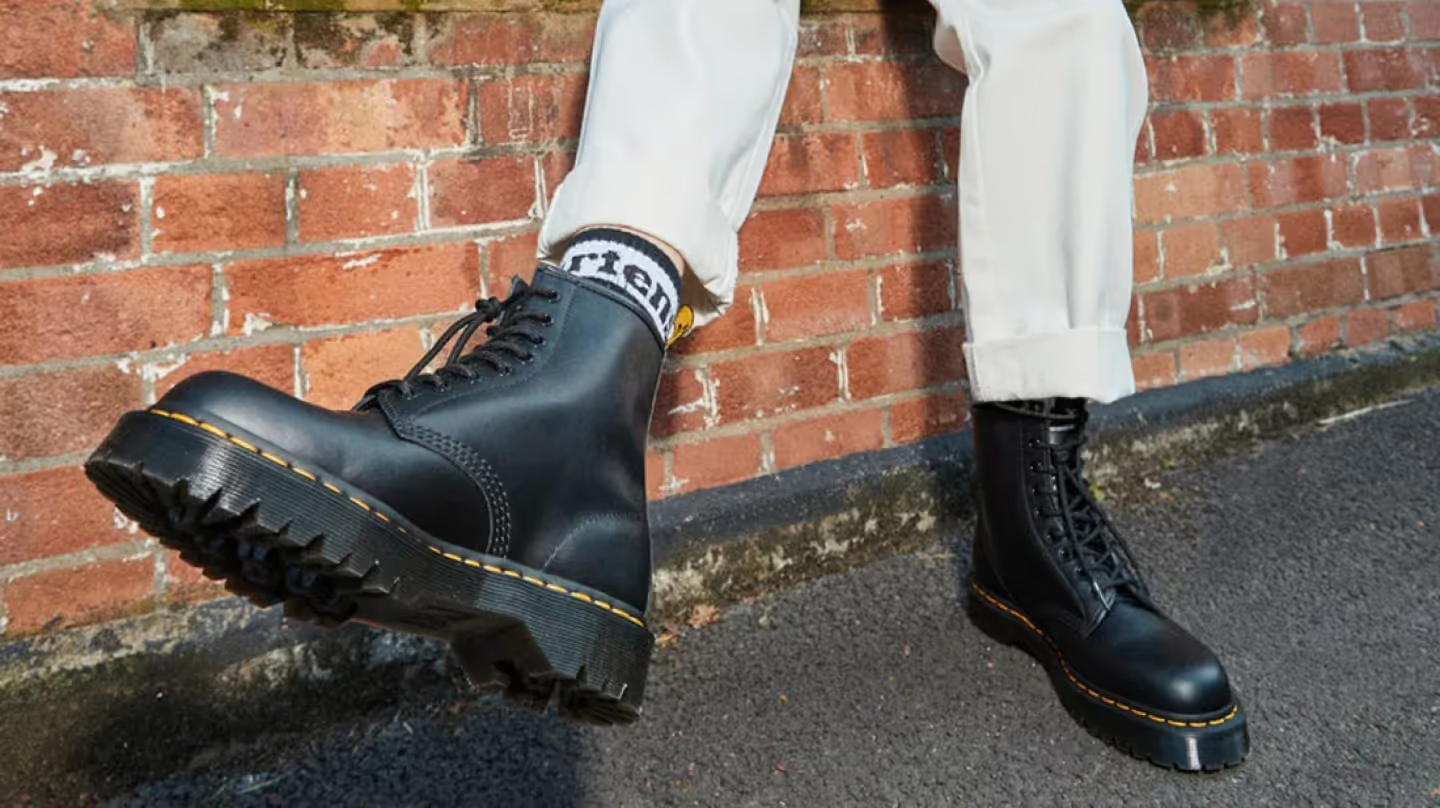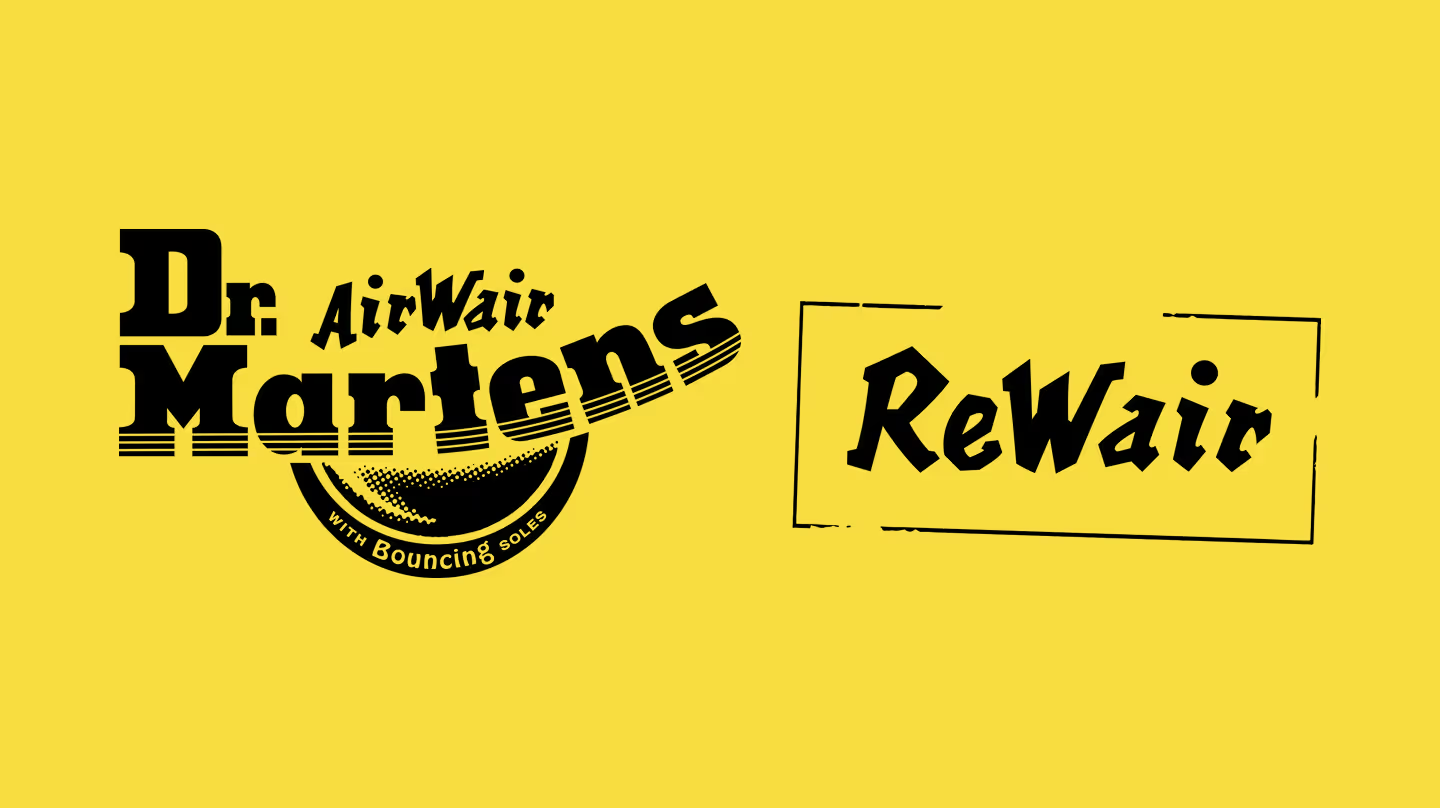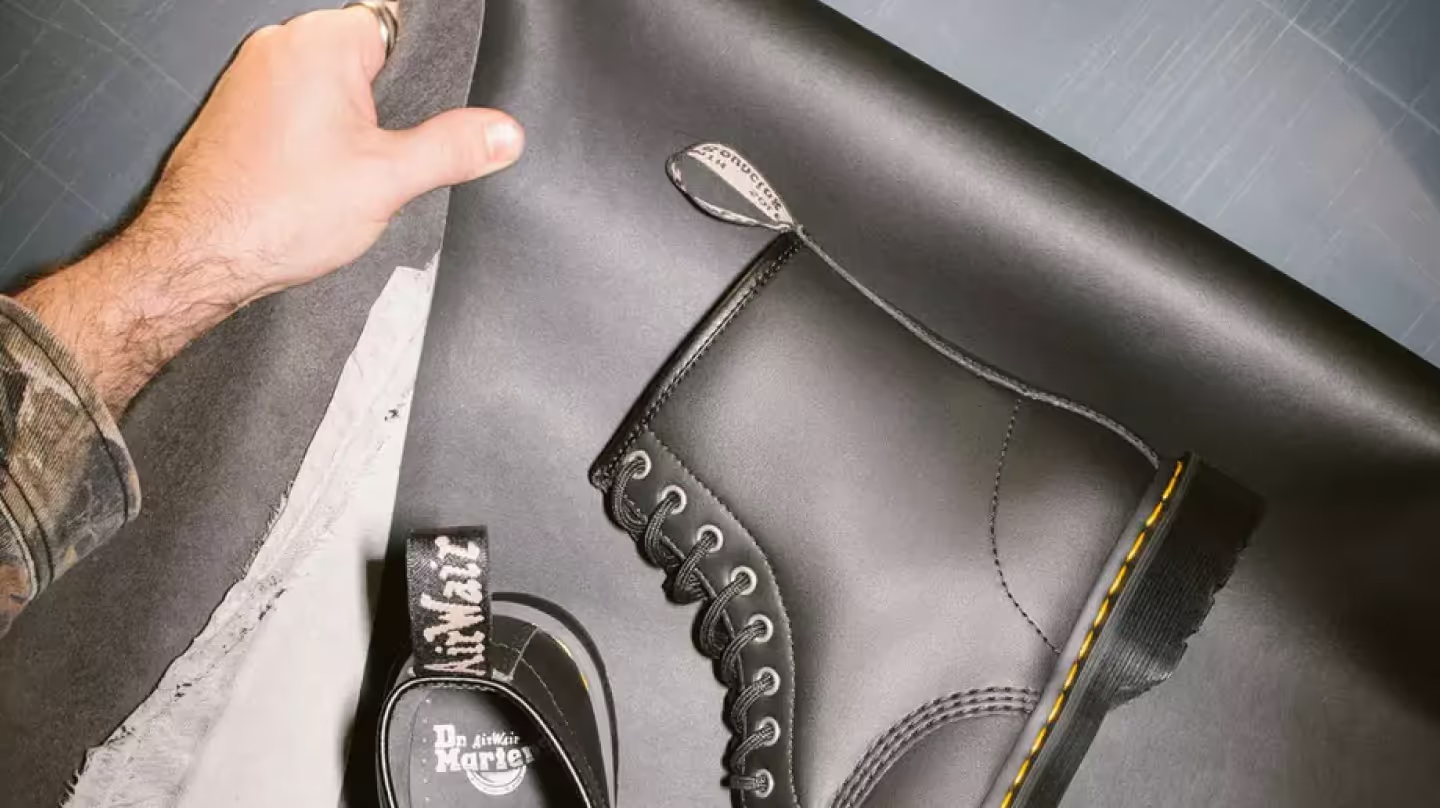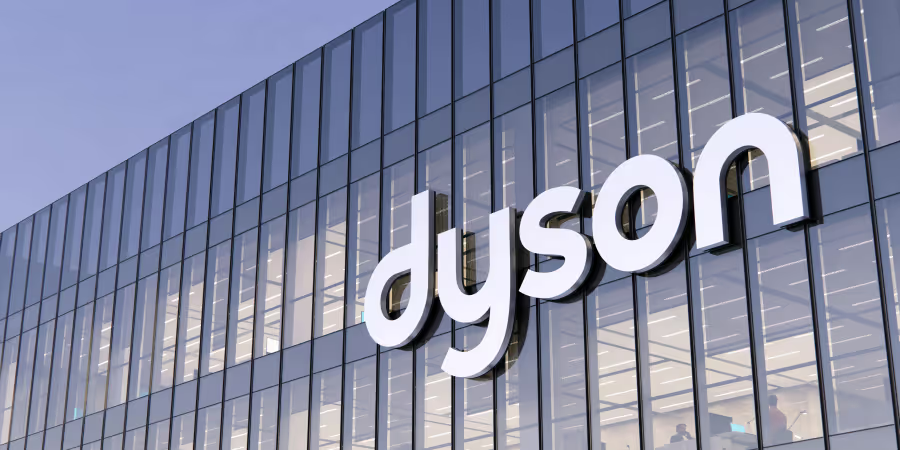Summary

From Rebellion to Renewal: Why Circularity Fits Dr. Martens
Few brands in the world of footwear have built such a strong identity around durability and self-expression as Dr. Martens. For decades, their boots and shoes have been worn by those who want to stand out, stand strong, and stand up for something. The signature yellow stitching, tough leather, and timeless silhouettes have made Dr. Martens a symbol of resilience — products designed not just for seasons, but for years, sometimes even decades.
That focus on durability makes circularity not just a good fit for Dr. Martens — it makes it the natural next step. Circular business models are about keeping products in use longer, recovering value that would otherwise be lost, and reducing waste at every stage. For a brand whose products are built to last, resale, repair, and refurbishment feel like an extension of its DNA rather than a departure from it.
The launch of the ReWair program and other circular initiatives is also closely linked to Dr. Martens’ broader climate goals. The company has committed to reaching Net-Zero emissions by 2040, with near-term and long-term targets validated by the Science Based Targets initiative (SBTi). Circularity is a key lever in that strategy — because the longer products stay in circulation, the less new material is needed, and the lower the environmental footprint of every pair of boots.
For Dr. Martens, circularity is not a trend. It’s a way to honor what the brand has always stood for, while building a business model ready for the future.
ReWair: Turning Worn Boots Into New Business
In March 2024, Dr. Martens introduced ReWair, its first official resale program in the United States. The goal is clear: give worn boots, shoes, and bags a second life through professional restoration and resale. For customers, ReWair offers a way to access iconic Dr. Martens products at lower prices while contributing to a circular economy. For the brand, it opens new business opportunities while aligning with sustainability goals.
Behind the scenes, ReWair is powered by two key partners. Tersus Solutions, a leader in waterless cleaning technology, handles the restoration process. Using a closed-loop liquid CO2 system, Tersus cleans and refreshes each pair without consuming water or using harsh chemicals. This technology helps preserve the durability and look that customers expect from Dr. Martens.
The digital side of ReWair is designed to ensure that every product listed meets Dr. Martens’ quality standards. The system supports the grading, listing, and sales process so that secondhand boots and bags can be offered at scale without compromising on customer experience.
Every item that enters the ReWair program goes through a detailed, multi-step process before it reaches the online shop:
Step 1: Assessment
Skilled technicians inspect each product to determine what restoration is needed.
Step 2: Cleaning
The item is cleaned using the Tersus liquid CO2 system, which removes dirt and odors while protecting the material.
Step 3: Repair
Any necessary repairs are completed using professional methods that match the original manufacturing standards.
Step 4: Grading
Products are graded for condition, ensuring consistency with the brand’s requirements.
Step 5: Final check and listing
Each item passes a final quality inspection before being listed for sale on the ReWair platform.
If a product cannot be restored to resale standards, it is directed to the next best use, such as donation or recycling. This ensures that nothing goes to waste unnecessarily and keeps as many materials as possible in circulation.
ReWair proves that circularity can deliver both business value and environmental benefits when paired with the right partners, technology, and attention to quality.

The Customer Trade-In Experience
The ReWair program isn’t just about selling restored boots. It’s designed to make it easy for customers to return used Dr. Martens products and play an active role in keeping materials in circulation. In the United States, customers who bring their worn boots or bags to selected stores — currently in Los Angeles and Portland — receive a $20 voucher toward their next purchase. It’s a simple but effective incentive that encourages participation and rewards customers for extending the life of their gear.
Dr. Martens has also piloted a trade-in program in London stores. There, customers could hand in any pair of worn shoes, regardless of brand or condition, and receive a 20% discount on a new pair of Dr. Martens boots. This trial demonstrated how trade-in can both reduce waste and strengthen brand loyalty. The company has expressed plans to expand trade-in options, including mail-in services and availability at more retail locations in the future.
The process is designed to be straightforward. Customers drop off their used items in-store, without needing to pre-sort or pre-clean them. From there, Dr. Martens and its partners handle the rest. Items suitable for refurbishment enter the ReWair process. Products that can’t meet resale standards are responsibly managed — they’re either donated to organizations that can use them or sent for recycling, ensuring minimal environmental impact.
This customer-focused model shows that circularity doesn’t need to be complex. With the right incentives and infrastructure, it can be simple, engaging, and beneficial for everyone involved.
The Bigger Picture: Technology, Materials, and Circular Partnerships
ReWair is just one part of how Dr. Martens is building a circular future. Behind the scenes, the brand is investing in technologies, materials, and partnerships that make circularity possible at scale — and set new standards for the footwear industry.
A key example is Dr. Martens’ support of innovations like The Green Machine, a technology that enables fiber-to-fiber recycling of blended textiles. This system separates cotton from polyester using heat, water, and a small amount of biodegradable chemicals, preserving the full quality of the polyester fibers. It offers a solution to one of the toughest recycling challenges in fashion: mixed fabrics that previously couldn’t be effectively reused.
Dr. Martens is also rethinking its material sources. The brand invests in regenerative leather and rubber, working with suppliers who use farming practices that restore soil health and support ecosystems. This includes partnerships with organizations like Terra Genesis to promote regenerative rubber production and fair compensation for farmers. These steps help ensure that the materials in each pair of boots contribute to a healthier planet.
Another example of material innovation is the Genix Nappa collection. This line uses reclaimed leather offcuts that would otherwise go to waste. Through a multi-step process involving milling, layering, and a water-based finish, these offcuts are transformed into durable, high-quality leather products. The result is less waste and new value from materials that might have been discarded.
Beyond materials, Dr. Martens offers customers direct access to long-term product care through its authorized repair service in partnership with The Boot Repair Company. From sole replacements to new eyelets, these repairs use original machines, materials, and techniques. Customers can even choose different welt or stitching colors, combining sustainability with personal style.
Together, these initiatives show that circularity is more than resale. It’s about rethinking the entire value chain — from raw materials to after-sales care — and building systems that keep products and resources in use as long as possible.

Circularity With Measurable Impact
Dr. Martens shows that circularity isn’t just good in theory — it delivers measurable environmental results. Every pair of boots sold through ReWair generates about 89% fewer greenhouse gas emissions compared to producing a new pair. That’s a significant reduction, especially in an industry where material use and manufacturing have a large carbon footprint.
These savings contribute directly to Dr. Martens’ broader climate commitments. The company’s Net-Zero targets, validated by the Science Based Targets initiative (SBTi), set clear near- and long-term goals. By 2030, Dr. Martens aims to reduce Scope 1 and 2 emissions by 90% and cut Scope 3 emissions by 30% compared to its 2020 baseline. By 2040, the target is a 90% reduction in Scope 3 emissions — an ambitious goal that requires circular models like ReWair to succeed.
Dr. Martens’ progress hasn’t gone unnoticed. The company has earned external recognition for its sustainability efforts, including an AAA ESG rating from MSCI and a B score from CDP for climate action. These ratings reflect not only the impact of ReWair but the company’s broader integration of sustainability across its business.
For Dr. Martens, circularity is a key lever to cut emissions, reduce waste, and build a business model that is as resilient as its boots.
What Other Brands Can Learn
Dr. Martens’ journey with ReWair offers valuable lessons for any brand aiming to build a circular business model. The key is to stop thinking of circularity as a single initiative and start seeing it as a full ecosystem — where design, operations, partnerships, and customer engagement all work together.
It begins with designing products for multiple lives. When items are built to last, easy to repair, and simple to disassemble, circularity becomes far easier and more cost-effective. Dr. Martens shows that design choices made at the start can unlock value for years to come.
It also takes investment in operations and partnerships. From the Green Machine for material recycling to the Boot Repair Company’s authorized services, Dr. Martens demonstrates that working with the right experts accelerates progress and helps overcome technical and logistical challenges.
Resale, repair, and trade-in programs don’t just deliver environmental value. They open new revenue streams and act as powerful tools to strengthen customer loyalty. By giving customers more ways to engage — whether through trade-in discounts or personalized repairs — brands can build deeper relationships that last well beyond the first purchase.
Finally, success comes from making circularity easy and attractive. Simple trade-in processes, clear incentives, and a seamless shopping experience on platforms like ReWair lower the barrier for customers. When participation feels effortless, more products stay in the loop — creating a win for business, customers, and the planet.




